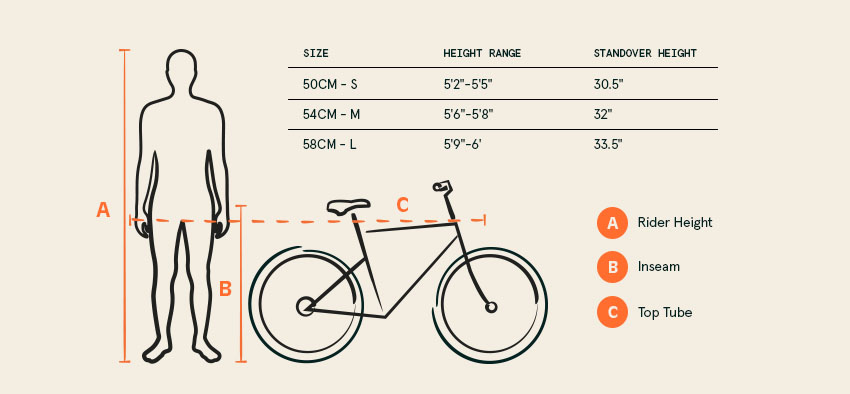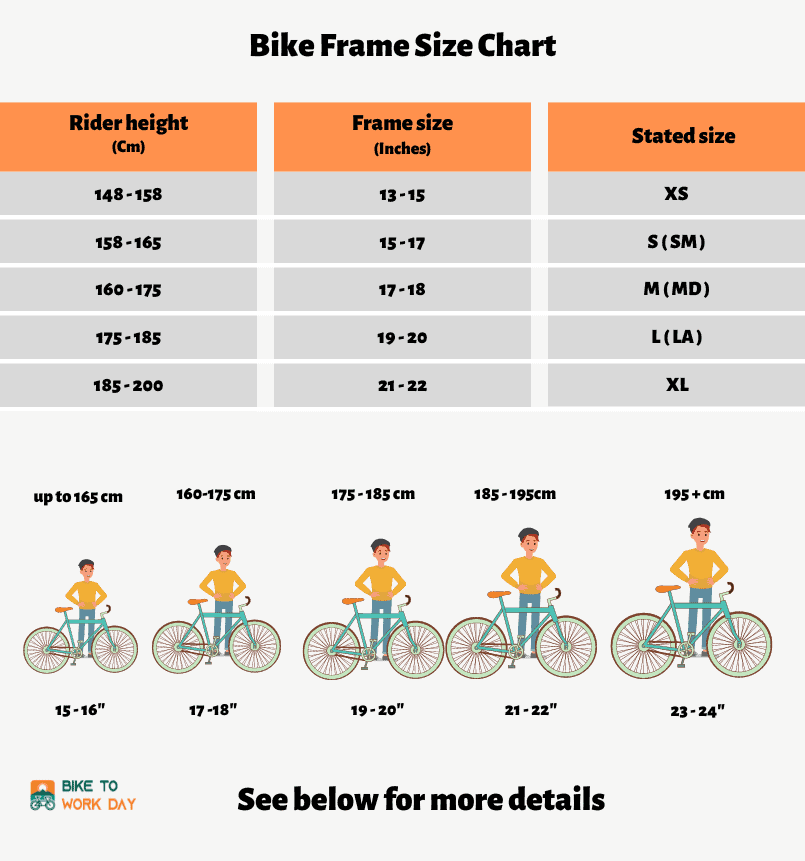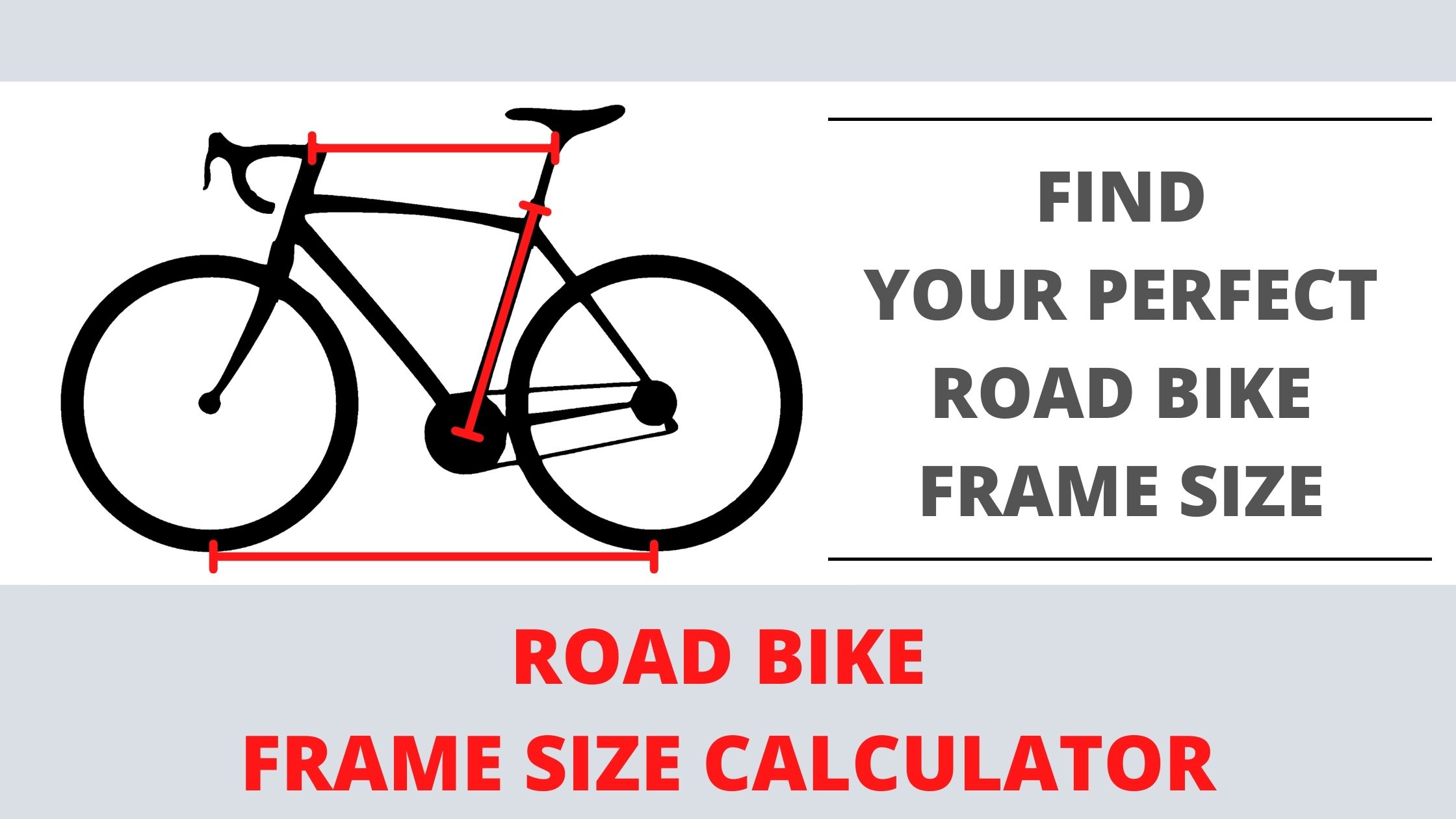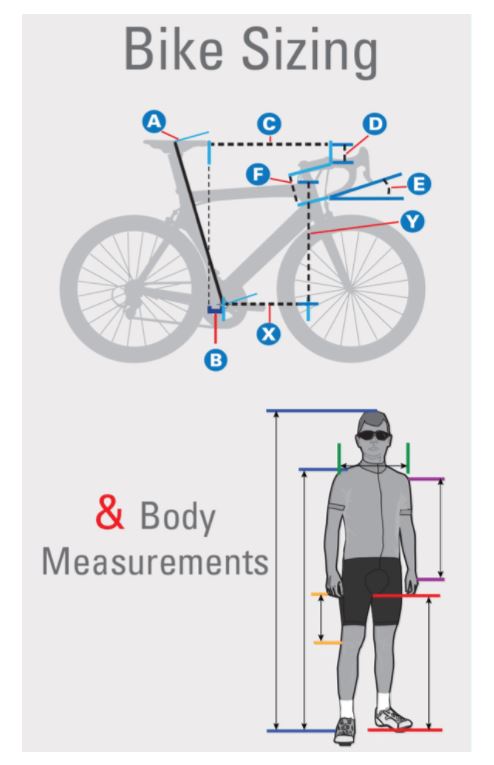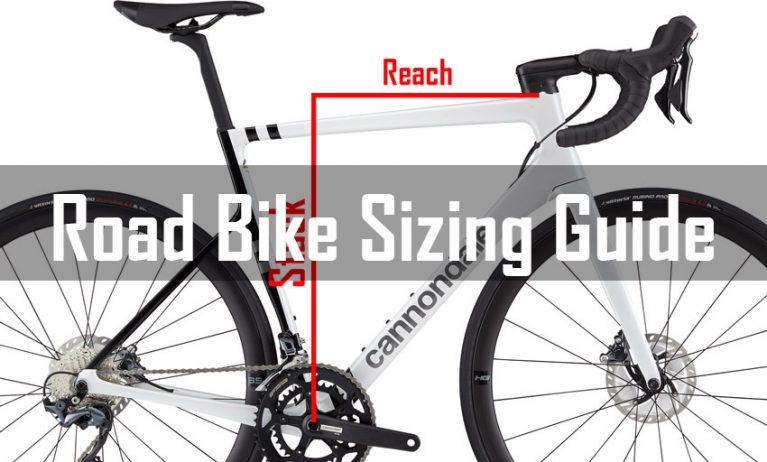The Significance of Proper Road Bike Sizing
Proper bicycle road bike sizing is crucial for a variety of reasons, primarily related to enhancing the overall cycling experience. A well-fitted bike contributes to improved comfort, efficiency, and safety, while an ill-fitted bike can lead to discomfort, injuries, and reduced performance. This section will delve into the importance of bicycle road bike sizing and how it impacts cyclists in various ways.
Comfort is a significant factor in cycling, and a properly sized bike can help riders maintain a comfortable position for extended periods. Ill-fitted bikes can cause strain on muscles and joints, resulting in discomfort and potential injuries. Proper sizing ensures that the rider’s body is in alignment with the bike’s components, reducing the risk of strain and increasing overall comfort.
Efficiency is another benefit of proper bicycle road bike sizing. When a bike is correctly fitted to a rider, it allows for optimal power transfer and reduces energy loss. This results in a more efficient pedaling motion and improved overall performance. Conversely, an ill-fitted bike can lead to inefficiencies, as the rider may struggle to maintain a comfortable and powerful pedaling position.
Safety is a critical aspect of cycling, and a properly sized bike can help reduce the risk of accidents and injuries. A well-fitted bike ensures that the rider has adequate control and can maneuver the bike effectively. Ill-fitted bikes, on the other hand, can compromise the rider’s control and increase the risk of accidents.
In summary, proper bicycle road bike sizing is essential for enhancing comfort, improving efficiency, and ensuring safety. By taking the time to find the right bike size, cyclists can enjoy a more enjoyable and productive riding experience. In the following sections, we will discuss the anatomy of a road bike and how to measure oneself for a road bike, providing a comprehensive guide to understanding bicycle road bike sizing.
Anatomy of a Road Bike: Key Measurements and Components
Proper bicycle road bike sizing relies on understanding the essential measurements and components of a road bike. These factors contribute to the overall fit and feel of the bike, ultimately impacting the rider’s comfort, efficiency, and safety. In this section, we will discuss the key measurements and components of a road bike, including frame size, top tube length, stem length, and saddle position.
Frame Size
Frame size is a critical measurement when selecting a road bike, as it forms the foundation of the bike’s fit. Frame size is typically measured in centimeters and refers to the distance from the bike’s seat tube to the top tube’s intersection. A properly sized frame ensures that the rider has adequate standover clearance and can reach the handlebars comfortably.
Top Tube Length
Top tube length is the horizontal distance between the bike’s head tube and seat tube. This measurement impacts the rider’s reach and affects their position on the bike. A top tube that is too long can result in a stretched-out position, causing discomfort and strain on the back and shoulders. Conversely, a top tube that is too short can lead to a cramped riding position, compromising control and efficiency.
Stem Length
Stem length is the distance between the bike’s steerer tube and the handlebars. This measurement impacts the rider’s reach and handlebar control. A stem that is too long can result in an overextended position, causing strain on the neck and shoulders. In contrast, a stem that is too short can lead to a cramped riding position, affecting control and maneuverability.
Saddle Position
Saddle position is the vertical and horizontal alignment of the saddle concerning the bike’s frame. Proper saddle positioning ensures optimal power transfer, reduces strain on the knees, and enhances overall comfort. Adjusting the saddle height, fore/aft position, and handlebar reach can significantly impact the bike’s fit and feel, making it essential to fine-tune these components for optimal performance.
In summary, understanding the anatomy of a road bike and its key measurements and components is crucial for proper bicycle road bike sizing. By considering frame size, top tube length, stem length, and saddle position, cyclists can ensure a comfortable, efficient, and safe riding experience. In the following sections, we will discuss how to measure oneself for a road bike and provide a comprehensive guide to understanding bicycle road bike sizing.
How to Measure Yourself for a Road Bike
To ensure a proper bicycle road bike sizing, it is essential to measure oneself accurately. Proper measurements contribute significantly to finding the right bike size and achieving optimal comfort, efficiency, and safety. This section will provide a step-by-step guide on how to measure oneself for a road bike, focusing on height, inseam length, and arm length.
Height
Height is a crucial measurement when determining the right road bike size. Stand against a wall, ensuring your feet are flat on the floor and your back is straight. Measure the distance from the floor to the top of your head using a measuring tape or a level. Record this measurement, as it will help determine the appropriate frame size for your road bike.
Inseam Length
Inseam length is another critical measurement when selecting a road bike. To measure your inseam length, stand against a wall with your feet approximately 6 inches apart. Place a hardcover book or a level between your legs, pressing it into your crotch. Measure the distance from the floor to the top of the book or level. Record this measurement, as it will help determine the appropriate saddle height and crank length for your road bike.
Arm Length
Arm length is a less commonly discussed measurement but is still essential for proper road bike sizing. To measure your arm length, stand straight with your arms extended to your sides. Measure the distance from the acromion process (the bony point at the top of your shoulder) to the tip of your middle finger. Record this measurement, as it will help determine the appropriate stem length and handlebar width for your road bike.
In summary, accurately measuring oneself for a road bike involves considering height, inseam length, and arm length. These measurements contribute significantly to finding the right bike size and achieving optimal comfort, efficiency, and safety. In the following sections, we will discuss how to use a frame size chart to find the appropriate road bike size and fine-tune your bike fit for optimal performance.
Choosing the Right Road Bike Size: A Frame Size Chart
Once you have measured yourself for a road bike, it’s time to use a frame size chart to determine the appropriate bike size. Frame size charts vary between brands and models, so it’s essential to consult the specific chart for the bike you’re interested in purchasing. This section will explain how to use a frame size chart and provide a general chart for popular road bike brands and models.
To use a frame size chart, locate your height measurement on the chart’s vertical axis. Then, follow the horizontal line corresponding to your height until it intersects with the brand or model you’re interested in. The chart will indicate the recommended frame size for your height. Keep in mind that this is a starting point, and further adjustments may be necessary to fine-tune the bike fit.
Here is a general frame size chart for popular road bike brands and models:
| Height (cm/in) | Frame Size (cm/in) | Brands/Models |
|---|---|---|
| 150-155 cm/4’11”-5’1″ | 48-50 cm/19-20 in | Giant Defy, Trek Domane, Specialized Allez |
| 155-160 cm/5’1″-5’3″ | 50-52 cm/20-21 in | Giant TCR, Trek Emonda, Specialized Tarmac |
| 160-165 cm/5’3″-5’5″ | 52-54 cm/21-22 in | Giant Propel, Trek Madone, Specialized Roubaix |
| 165-170 cm/5’5″-5’7″ | 54-56 cm/22-23 in | Cannondale SuperSix, Cervélo R5, Bianchi Infinito |
| 170-175 cm/5’7″-5’9″ | 56-58 cm/23-23 in | Pinarello Dogma F12, Wilier Zero SLR, Scott Foil |
| 175-180 cm/5’9″-5’11” | 58-60 cm/23-24 in | Colnago C64, BMC Teammachine, Fuji Transonic |
| 180-185 cm/5’11”-6’1″ | 60-62 cm/24-25 in | Look 795, Orbea Orca, Lapierre Xelius |
| 185-190 cm/6’1″-6’3″ | 62-64 cm/25-26 in | Canyon Ultimate, Parlee Z-Zero, De Rosa Merak |
Keep in mind that this is a general chart and may not accurately represent all road bike brands and models. Always consult the specific frame size chart for the bike you’re interested in purchasing to ensure the best fit.
Fine-Tuning Your Road Bike Fit: Adjusting Saddle Height, Fore/Aft Position, and Handlebar Reach
Once you have determined the appropriate frame size for your road bike, it’s time to fine-tune the fit for optimal comfort and performance. This section will discuss how to adjust saddle height, fore/aft position, and handlebar reach, providing tips on making these adjustments and explaining why they are essential for a proper road bike fit.
Saddle Height
Saddle height is one of the most critical factors in achieving a proper road bike fit. A saddle that is too high or too low can lead to discomfort, inefficiency, and even injuries. To adjust saddle height, follow these steps:
- Stand next to your bike and place your heel on the pedal.
- Adjust the saddle height so that your leg is fully extended, with a slight bend in your knee.
- Secure the saddle at the correct height and test the fit while pedaling.
A properly adjusted saddle height allows for a comfortable and efficient pedaling motion, reducing strain on the knees and other joints.
Fore/Aft Position
The fore/aft position of your saddle determines the relationship between your knee and the pedal axle. A saddle that is too far forward or backward can lead to discomfort and inefficiency. To adjust the fore/aft position, follow these steps:
- Place your bike in a trainer or on a level surface.
- Position the crankarms horizontally and place a plumb line or a level from the knee cap’s center to the pedal axle.
- Adjust the saddle fore/aft position so that the plumb line or level intersects the pedal axle.
A properly adjusted fore/aft position ensures that your knee is aligned with the pedal axle, reducing strain on the knee and improving pedaling efficiency.
Handlebar Reach
Handlebar reach is the distance between the saddle and the handlebars. A handlebar reach that is too long or too short can lead to discomfort and reduced control. To adjust handlebar reach, follow these steps:
- Measure the distance between the saddle’s nose and the center of the handlebars.
- Compare this measurement to the recommended handlebar reach for your body size and flexibility.
- Adjust the handlebar stem length or angle to achieve the recommended handlebar reach.
A properly adjusted handlebar reach ensures that you have adequate control and comfort while riding, reducing strain on the neck, shoulders, and back.
In summary, fine-tuning your road bike fit by adjusting saddle height, fore/aft position, and handlebar reach is essential for optimal comfort and performance. By following these steps and making the necessary adjustments, you can ensure a proper road bike fit and enjoy a more comfortable and efficient riding experience.
Common Road Bike Fit Issues and How to Solve Them
Even after selecting the right road bike size and fine-tuning the fit, some cyclists may still experience discomfort or reduced performance due to common road bike fit issues. This section will identify common road bike fit issues, such as knee pain, numb hands, and lower back discomfort, and provide solutions for addressing these problems. Additionally, this section will mention the role of bike fit specialists and the benefits of professional bike fitting services.
Knee Pain
Knee pain is a common issue for cyclists and can be caused by various factors, including improper saddle height or fore/aft position, incorrect cleat alignment, or muscular imbalances. To address knee pain, consider the following:
- Ensure that your saddle height and fore/aft position are correctly adjusted.
- Check your cleat alignment and ensure that your feet are properly positioned on the pedals.
- Consider addressing any muscular imbalances through stretching, strengthening exercises, or massage therapy.
Numb Hands
Numb hands are often caused by excessive pressure on the hands and nerves, which can be due to improper handlebar positioning or grip, or poor bike fit. To address numb hands, consider the following:
- Ensure that your handlebars are at the correct height and angle for your body size and riding style.
- Check your grip on the handlebars and consider using ergonomic grips or gloves to reduce pressure on the nerves.
- Consider adjusting your bike fit to reduce pressure on the hands and nerves.
Lower Back Discomfort
Lower back discomfort can be caused by various factors, including improper saddle position, handlebar height, or riding posture. To address lower back discomfort, consider the following:
- Ensure that your saddle position is correctly adjusted, with the correct saddle height and fore/aft position.
- Check your handlebar height and ensure that it is at the correct height for your body size and riding style.
- Consider adjusting your riding posture and engaging your core muscles to reduce strain on the lower back.
In addition to addressing these common road bike fit issues, it is essential to consider the role of bike fit specialists and the benefits of professional bike fitting services. Bike fit specialists have the expertise and tools to provide a comprehensive bike fit, addressing all aspects of bike fit and ensuring optimal comfort and performance. Professional bike fitting services can help cyclists of all levels achieve a proper bike fit, reducing the risk of discomfort, injuries, and reduced performance.
In summary, common road bike fit issues, such as knee pain, numb hands, and lower back discomfort, can significantly impact a cyclist’s comfort and performance. By addressing these issues and considering the role of bike fit specialists and professional bike fitting services, cyclists can ensure a proper bike fit and enjoy a more comfortable and efficient riding experience.
Maintaining Your Road Bike Fit: Regular Check-Ups and Adjustments
Even after achieving a proper road bike fit, it is essential to maintain the fit over time as changes in one’s body, riding style, or bike components can affect the fit and require adjustments. This section will emphasize the importance of regular bike fit check-ups and adjustments, explaining how to maintain a proper bike fit and enjoy a comfortable and efficient riding experience.
Changes in One’s Body
Changes in one’s body, such as weight loss or gain, muscle imbalances, or injuries, can significantly impact a cyclist’s bike fit. Regular bike fit check-ups can help identify these changes and ensure that the bike fit remains optimal. For example, if a cyclist experiences weight loss, the saddle height and fore/aft position may need to be adjusted to maintain the correct fit.
Changes in Riding Style
Changes in riding style, such as switching from long, endurance rides to shorter, more intense rides, can also affect a cyclist’s bike fit. For example, a cyclist who switches from long, endurance rides to shorter, more intense rides may benefit from a lower handlebar position to improve aerodynamics and power transfer. Regular bike fit check-ups can help identify these changes and ensure that the bike fit remains optimal for the cyclist’s intended use.
Changes in Bike Components
Changes in bike components, such as switching to a different saddle, handlebars, or pedals, can also affect a cyclist’s bike fit. For example, switching to a different saddle with a different shape or width can require adjustments to the saddle position to maintain the correct fit. Regular bike fit check-ups can help identify these changes and ensure that the bike fit remains optimal for the cyclist’s components.
In summary, maintaining a proper road bike fit requires regular bike fit check-ups and adjustments. Changes in one’s body, riding style, or bike components can affect the fit and require adjustments to maintain optimal comfort and performance. By prioritizing regular bike fit check-ups and adjustments, cyclists can ensure a proper bike fit and enjoy a more comfortable and efficient riding experience.
Selecting the Right Road Bike: Balancing Fit, Comfort, and Performance
When selecting a road bike, it is essential to balance fit, comfort, and performance to ensure a satisfying and enjoyable riding experience. This section will discuss how to balance these factors, mentioning the role of personal preferences, budget, and intended use in the decision-making process.
Personal Preferences
Personal preferences, such as riding style, aesthetic preferences, and brand loyalty, can significantly impact the decision-making process when selecting a road bike. For example, a cyclist who prefers a more aggressive riding position may prioritize a road bike with a shorter head tube and a more stretched-out position. A cyclist who values aesthetics may prioritize a road bike with a unique paint job or design. By considering personal preferences, cyclists can ensure that they select a road bike that meets their individual needs and desires.
Budget
Budget is another critical factor to consider when selecting a road bike. High-end road bikes can cost several thousand dollars, while entry-level road bikes can cost a few hundred dollars. By setting a budget, cyclists can narrow down their options and select a road bike that fits their financial constraints. Keep in mind that a higher price does not always equate to a better fit or performance. It is essential to consider all factors, including fit, comfort, and performance, when selecting a road bike, regardless of the price.
Intended Use
Intended use is also an essential factor to consider when selecting a road bike. For example, a cyclist who plans to participate in long, endurance rides may prioritize a road bike with a more comfortable riding position and a larger frame size. A cyclist who plans to participate in criterium races may prioritize a road bike with a more aggressive riding position and a smaller frame size. By considering the intended use, cyclists can ensure that they select a road bike that meets their specific needs and goals.
In summary, balancing fit, comfort, and performance is essential when selecting a road bike. By considering personal preferences, budget, and intended use, cyclists can ensure that they select a road bike that meets their individual needs and desires. By prioritizing fit, comfort, and performance, cyclists can enjoy a satisfying and enjoyable riding experience.


